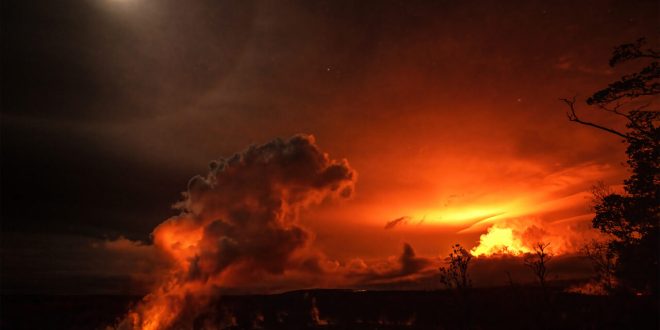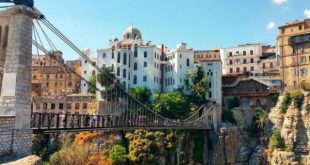The week ends with both Hawaiian volcanoes, Mauna Loa and Kīlauea, located on the Big Island of Hawaii, going silent in unison.
Mauna Loa
Mauna Loa, which Securely Travel visited and watched the lava flow along the course of Fissure-3, ground to a halt just 1.7 miles from the Daniel K. Inouye highway. The National Park Service has advised that the portion of the park near Mauna Lao is closed.
USGS Hawaiian Volcano Observatory reports:
HAWAIIAN VOLCANO OBSERVATORY DAILY UPDATE
U.S. Geological Survey
Thursday, December 15, 2022, 8:04 AM HST (Thursday, December 15, 2022, 18:04 UTC)
MAUNA LOA (VNUM #332020)
19°28’30” N 155°36’29” W, Summit Elevation 13681 ft (4170 m)
Current Volcano Alert Level: ADVISORY
Current Aviation Color Code: YELLOWActivity Summary:
Mauna Loa is no longer erupting.
As of 7:00 a.m. today, December 15, webcams only captured residual incandescence and no lava movement in the F3 vent. The channels below the vent appear drained of lava and no longer feed the main flow front.
The inactive main flow front remains stalled about 1.7 mi (2.8 km) from the Daniel K. Inouye Highway (Saddle Road) when last measured on the morning of December 10. The inactive main flow front still glows at a few spots at night and may inch northward very slowly as it continues to settle.
Sulfur dioxide (SO2) emission rates are at background levels; on December 10, the emission rate was approximately 2,000 tonnes per day (t/d). The Hawaii Interagency Vog Information Dashboard has detailed information about vog: https://vog.ivhhn.org/. Forecasts for the dispersion of vog can be found on the VMAP Vog Forecast Dashboard: http://weather.hawaii.edu/vmap/new/.
Tremor (a signal associated with subsurface fluid movement) is no longer detectable; summit and Northeast Rift Zone inflation is slowing.
The significance of the continuing inflation while the flow field is inactive is not yet clear; it is common for eruptions to wax and wane or pause completely, but none of the eight recorded eruptions from Mauna Loa’s Northeast Rift Zone returned to high eruption rates after those rates decreased significantly. Nevertheless, the Hawaiian Volcano Observatory continues to closely monitor the current activity.
There is no active lava within Moku’āweoweo caldera nor in either rift zone. Satellite imagery shows the entire 2022 flow field cooling and no longer active.
Kīlauea
Kīlauea, whose eruption began in 2018, also stopped its eruption this past week, bringing to a close the almost four years of activity. The portion of Volcanoes National Park in proximity to Kīlauea remains open.
USGS Hawaiian Volcano Observatory reports:
HAWAIIAN VOLCANO OBSERVATORY STATUS REPORT
U.S. Geological Survey
Wednesday, December 14, 2022, 5:04 PM HST (Thursday, December 15, 2022, 03:04 UTC)
KILAUEA (VNUM #332010)
19°25’16” N 155°17’13” W, Summit Elevation 4091 ft (1247 m)
Current Volcano Alert Level: ADVISORY
Current Aviation Color Code: YELLOWActivity Summary
Eruptive activity has not resumed at the summit of Kīlauea; the volcano alert level and aviation color code remains at YELLOW/ADVISORY. A passive overturn of the Halemaʻumaʻu lava lake began just before noon and continued until about 4 p.m. HST today, December 14, exposing new lava at the surface of the lake. There has been no resumption of seismic tremor (indicative of fluid movement), strong degassing, or supply of lava from the west vent that would be associated with re-activation of the eruption. Seismicity and deformation patterns remain low but unsettled. Potential remains for resumption of this eruption or initiation of a new eruption at or near the summit of Kīlauea.
Observations
The lava lake within Halemaʻumaʻu crater began crusting over between December 6th and 9th and the crust was likely less than 3 feet thick. Small pods of lava appeared on the crust in the northeast corner of the formerly active lava lake just before noon today, December 14. The weight of the small lava flows on top of the crust caused the immediate area to founder and overturn exposing the underlying lava within Halemaʻumaʻu crater. Following each overturn, another small flow progressed onto the adjacent crust, causing another 5-10% of the adjacent lake crust to founder and sink. The process repeated itself over the next several hours and by 4 p.m. HST today the entire surface of the small lava lake was resurfaced with new crust. This process is driven by hotter, boyount lava rising below the lakeʻs surface and weighing down the surface crust causing it to sink. Passive overturns are not uncommon in cooling lava lakes and this activity may be repeated during the next several weeks.
 Securely Travel Travel Securely
Securely Travel Travel Securely





